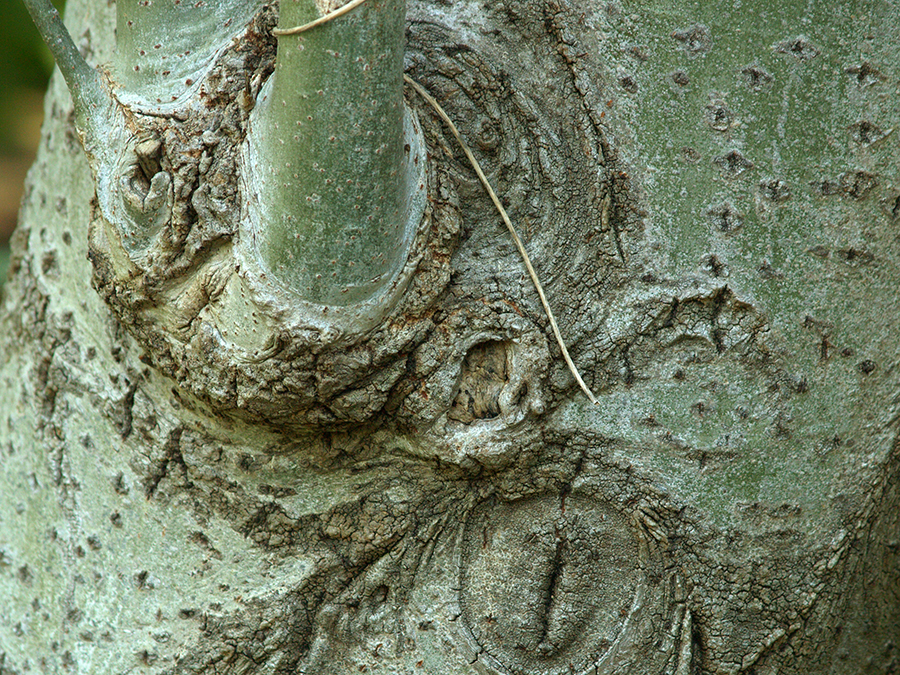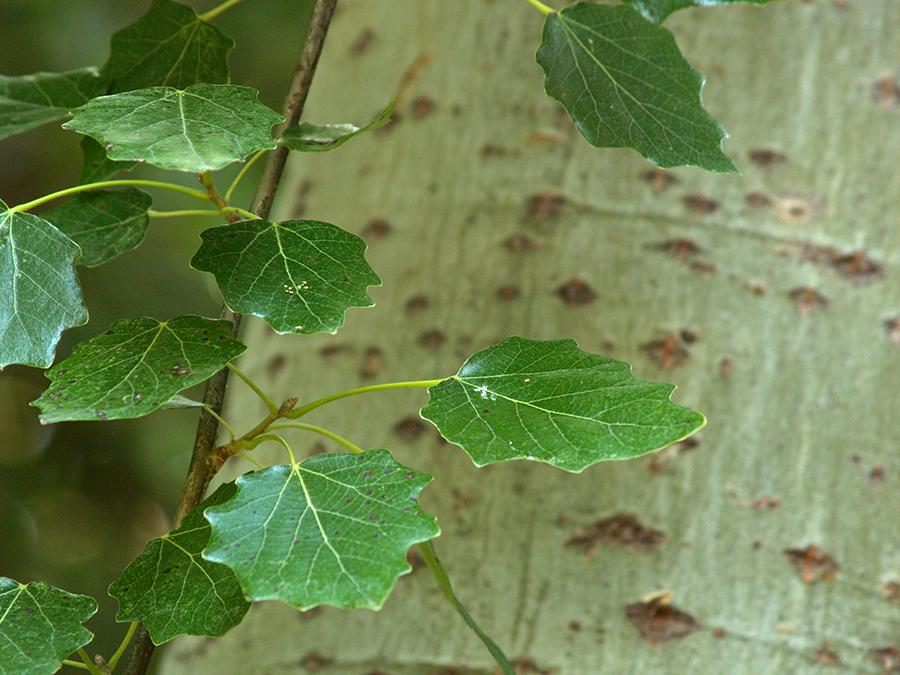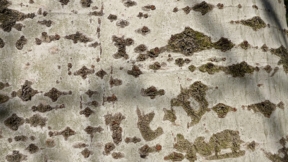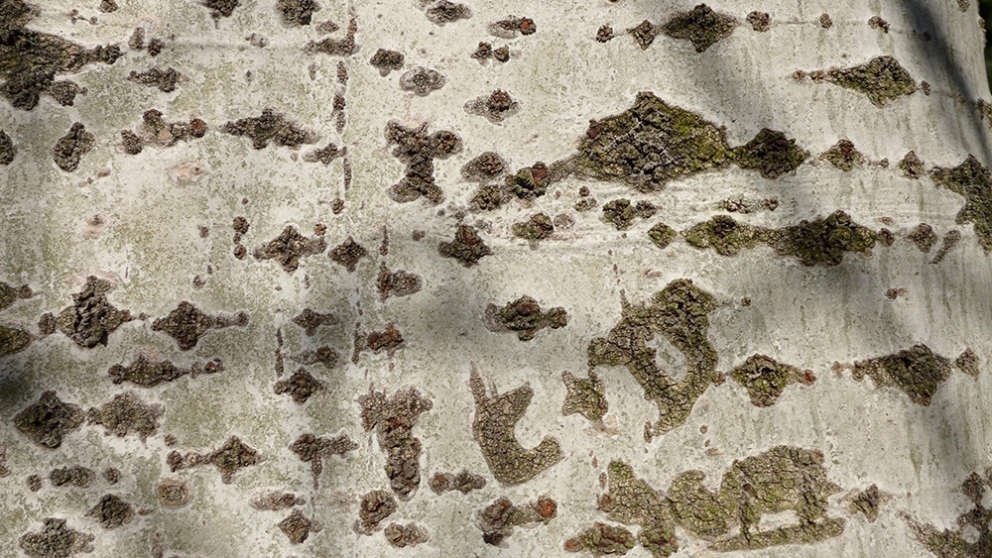
Grey Poplar
Populus canescens
Family and description
From the Salicaceae family, the Grey Poplar emerges from the crossing of the White Poplar and Eurasian Aspen (Populus alba x Populus tremula). Possessing intermediate morphological characteristics in relation to its progenitors, it can, however, reach 40m in height, greater dimensions than any of the other poplars. This species is also a deciduous tree. Its trunk is robust and straight, with a grey-brown bark, ramifying into multiple ascending branches.
The leaves are simple, almost ovate-deltoid, with toothed or lobulated margins, dark green on the upper surface and grey on the lower surface.
It is a dioecious species. The flowers, male and female catkins, are found on different trees.
The fruits are small capsules that open, releasing oval seeds with tufts of hairs.
They are fast-growing trees with a short life cycle.
Origin and habitat
Originally from Eurasia and North Africa, poplars are trees of riparian galleries, which may arise spontaneously in places with deep, moist and cool soils. It tolerates shade and waterlogged soils, preferring airy, neutral soils.
Uses and curiosities
It is used as an ornamental plant in streets and avenues.
The poplar has a low-density wood, easy to work with, albeit not very resistant.




